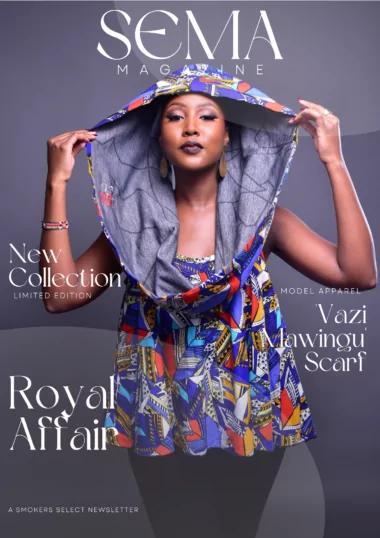
Sema Magazine
SEMA Magazine is a conversation between the culture shifters on the continent and the Culture Shifters in the Diaspora. This is an opportunity for a shout-out to the Artistic Afro-descendants worldwide. It is the ultimate Fashion, Entertainment, Travel, and Lifestyle bible for the modern Afrocentric.
Engage in the conversation!

Featured artist

GAT’ MO DJ
“Purveyor of Hip infectious dance grooves and a chilled-out atmosphere.”
That’s how Gatimu Mugo describes himself as a DJ. This Kenyan Born, Nairobi bred former banker, has an enduring love for Music and an affinity for the audience that allows him to delve deeply into his craft. Growing up in Kileleshwa at the height of the 90’s Hip Hop, R&B and coming of age in the 2000s. Gatimu gets a feeling of total satisfaction on his turn-tables as his audience responds to the music that reminds folks of the era of great rap, hip hop, and the quixotic nature of black culture.
With a portfolio that includes playing for a Jidenna Concert and the premier Artist Incubator; the Coca Cola Studio. With his Biggie, Fugees, Jay Z, Foxxy Brown and Usher under his arm Gat’Mo has big plans for the future. “Locally, I would love to play the Sevens’ Circuit and internationally I feel the United States and England calling my name.”
A very active member of his local community and a closeness to the earth that is truly authentic to who he is. This emerging Artist is quite literally as down to earth as it gets “I love everything about being a DJ; developing my skill and good feedback from the crowd is the best. But if I couldn’t be a DJ, I would be farmer, I started in 2017 and I am still at it until today”
Vazi mawingu



Culture select

THE “Maa”
WHO ARE THE “MAA”?
ORIGIN
Many ethnic groups that had already formed settlements in the region were forcibly displaced by the incoming Maasai, while other, mainly Southern Cushitic groups, were assimilated into Maasai society. The Nilotic ancestors of the Kalenjin likewise absorbed some early Cushitic populations.
REGALIA
Clothing changes by age and location. Young men, for instance, wear black for several months following their circumcision. However, red is a favored colour. Blue, black, striped, and checkered cloth are also worn, as are multicolored African designs. The Maasai began to replace animal skin, calf hides and sheep skin with commercial cotton cloth in the 1960s.
Shúkà is the Maa word for sheets traditionally worn wrapped around the body. These are typically red, though with some other colors (e.g. blue) and patterns (e.g. plaid). Pink, even with flowers, is not shunned by warriors. One piece garments known as kanga, a Swahili term, are common. Maasai near the coast may wear kikoi, a type of sarong that.
Learn more about the Maa on our interactive website: www.smokers-select.com
Vazi mawingu
Origin: Introducing the “Umbo la Kenya” collection from the Smokers Select Brand. This collection is inspired by the authentic and everyday symbolism in Kenyan life. This Collection is a representation of a modern take on the colorful, multi-ethnic, multi-cultural flavor of the Kenyan people. We invite you to learn more about the collection and the world represented by our local designers.
Please note, that we are printing these special pieces in anticipation of the Uhuru Park opening in Nairobi and the last Madaraka Day of Uhuru Kenyatta.
We anticipate this piece will begin shipping the week of June 1, 2022.
Madaraka Day celebrates the day that Kenya attained internal selfrule. Freedom is a valued tenet of the Smokers Select Brand so we are honored to participate in these authentically Kenyan celebrations.


